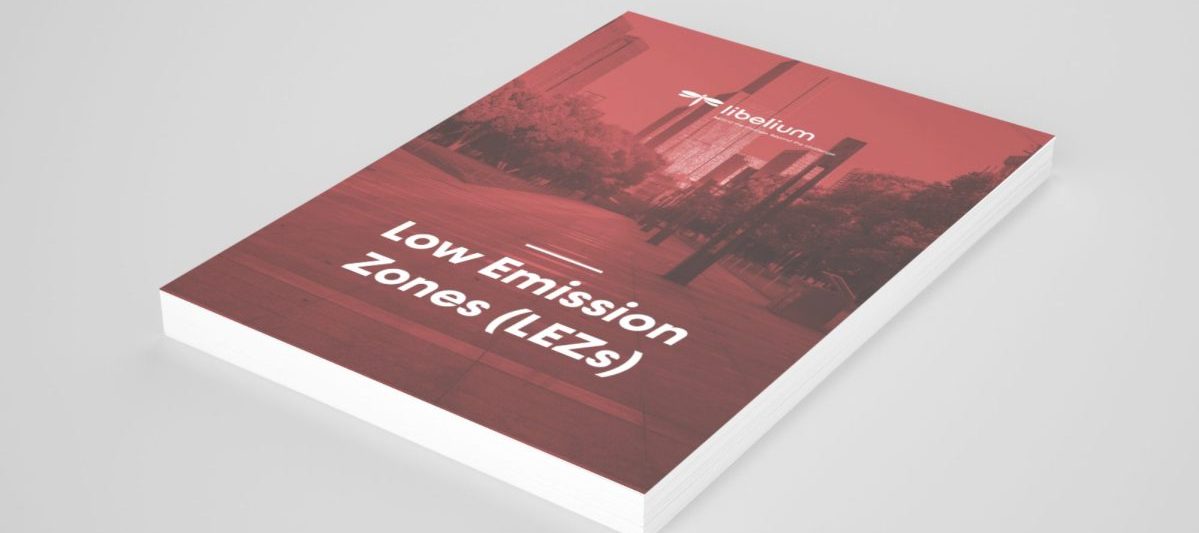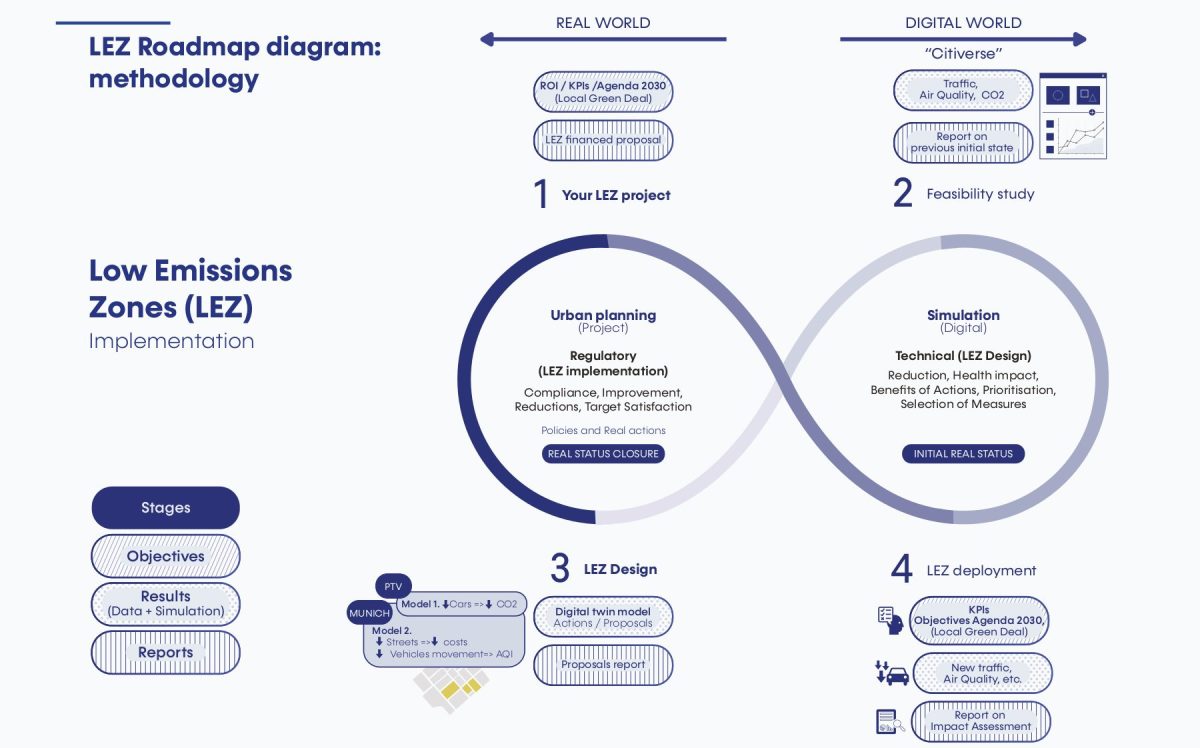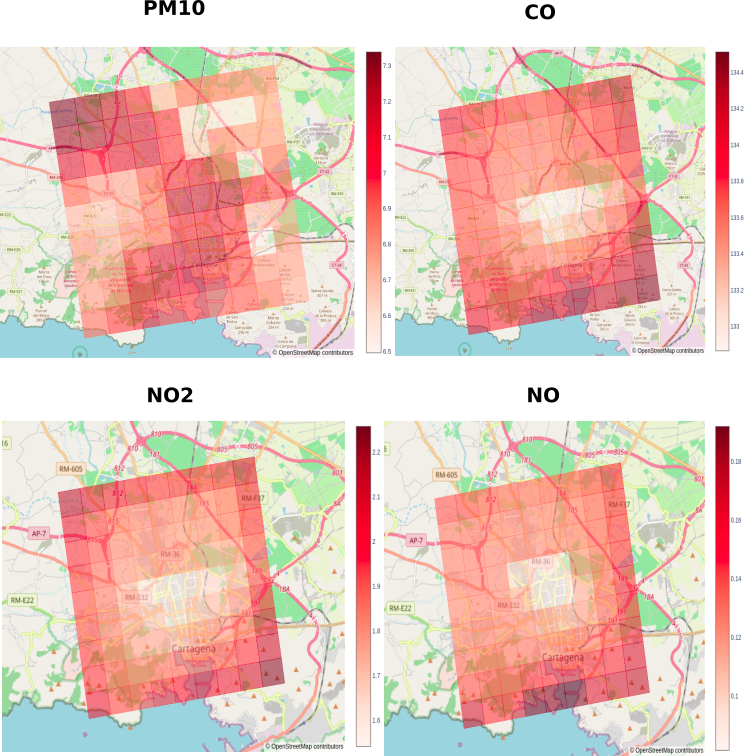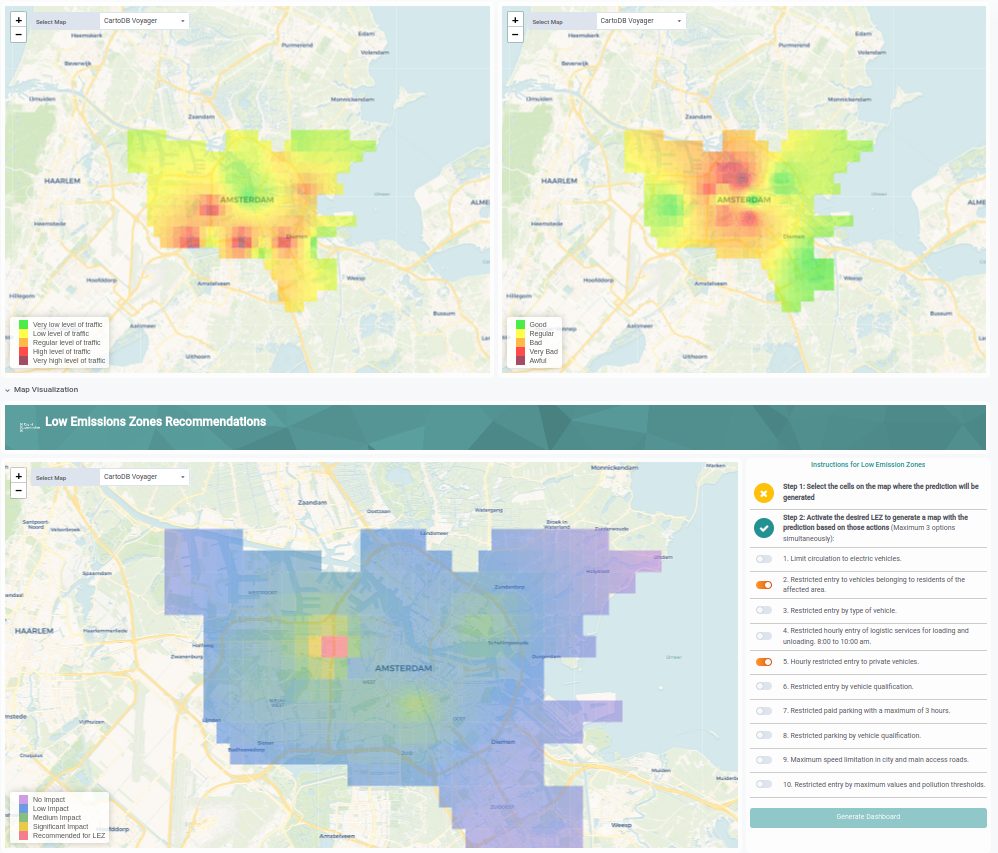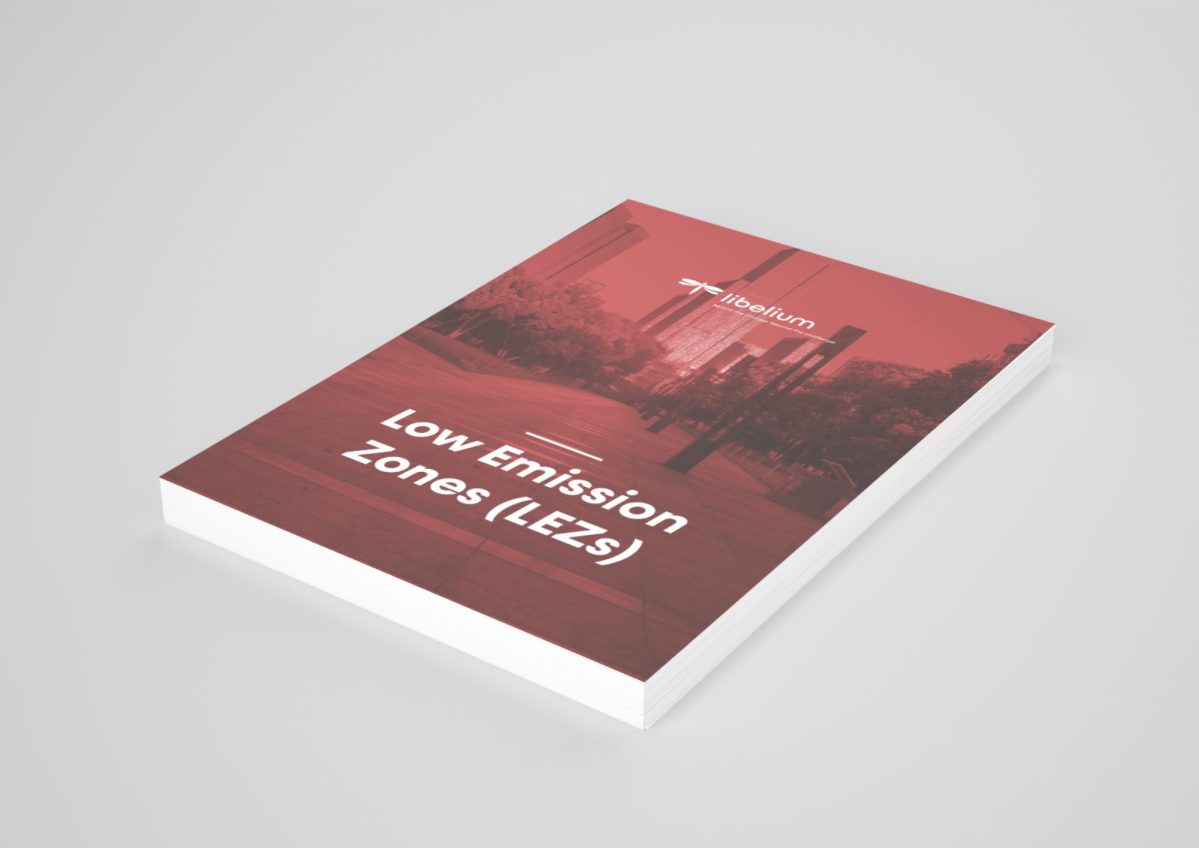Paris, Cartagena, Amsterdam and Helsinki, among other cities, have already implemented the AI service for Low Emission Zones designed by Libelium.
The service counts with the endorsement of the EU initiative, EIT Urban Mobility, Libelium’s Sustainability Impact Assessment (SIA) solution and enables the design and prediction of the impact of Low Emission Zones (LEZ).
I+D+i Libelium team innovation reduces the time required to design a Low Emission Zone from 12 months to just 3.
Rapid urbanisation and increased traffic have led to alarming levels of air pollution. In this scenario, cities face the challenge of reducing pollutant gas emissions and promoting sustainable mobility. This is where low emission zones (LEZs) emerge as effective tools for improving air quality, protecting public health, and promoting greener lifestyles in urban environments.
Libelium presents a revolutionary solution: the Sustainability Impact Assessment (SIA), specifically designed to predict the impact of Low Emission Zones on air quality. This innovative system, which uses advanced pollution dispersion modelling, offers a comprehensive perspective on air quality throughout the city, ensuring informed decision-making before implementing a LEZ.
Getting a current snapshot of the air quality
Using Internet of Things (IoT) devices, Libelium’s system monitors air quality in real-time, adhering to the official World Health Organization (WHO) indicators. This provides a current snapshot of the city’s air quality, including key metrics such as CO2 reduction and decreased private vehicle usage.
Managing Low Emission Zones with data-based confidence
Managing Low Emission Zones with confidence based on data is crucial for effective implementation and monitoring. By utilizing comprehensive data analysis and insights, decision-makers can make informed choices regarding the establishment and operation of LEZs. This tool allows a datacratic approach to make better-informed decisions on such crucial areas as air quality and public health.
Key features of the Libelium solution
Real-Time air quality Monitoring
Data is constantly updated and fine-tuned with IoT devices that report in real-time the actual air quality parameters.
Traffic and pollution dispersion models
These models are essential for identifying and managing critical pollution points within the city. They help detect areas where traffic significantly impacts air quality, allowing for targeted interventions.
Predictive analysis of Low Emission Zones measures
The solution’s advanced traffic models allow predicting how LEZ measures will reshape city traffic. This includes studying the potential redistribution of traffic and its subsequent impact on air quality and city dynamics.
Impact analysis on citizens
An integral part of the solution is its focus on social impact. By including public transport data, it measures the current use of public transport and models possible changes in transport habits from private vehicles to more sustainable options.
Libelium’s model is the only one that integrates traffic models and pollution propagation. It has been recognised by EIT Urban Mobility through the ImagiNext grant, in collaboration with CARNET (Volkswagen Group and Universitat Politécnica de Catalunya), Fraunhofer, and PTV Group, improving pollution and sustainability modelling.
Our approach significantly reduces the time required to design a low-emission zone from 12 months to just 3.
To learn more about download our booklet. Discover how air quality monitoring and low-emission zones can significantly impact urban life.
Download the booklet
🌍 Download here and take the first step towards a healthier city (también disponible en español 🇪🇸)
Want to receive this and more IoT news directly to your email?
🔔 Subscribe to our newsletter and don’t miss anything!
You will learn about IoT and how it helps to make the world a more sustainable and efficient place.


